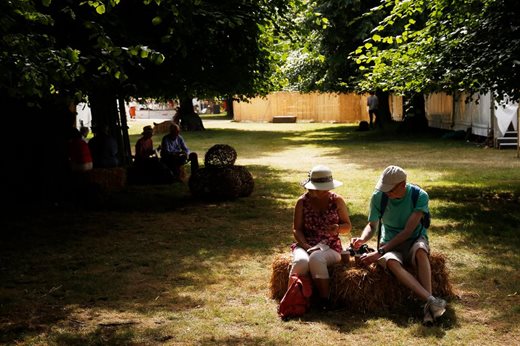Climate Scientist, Eleanor Webster, looks back at the summer of 2017 and asks if the weather really has changed from the halcyon days of previous years
With the clocks about to go back and the landscape turning dramatic shades of auburn, basking in the summer sun might seem like a distant memory but this summer proved to be a mixed bag, as we also recall those drenched days out.
Warm and wet
Both temperature and rainfall were above the 1981-2010 average this summer, with 2017 being one of the 10 wettest summers since 1910, according to a Met Office summary report. High temperatures were skewed by an especially warm June across all parts of the UK, but this was particularly apparent over eastern England. In fact, June 2017 was the fifth warmest in a series since 1910.
 Although the summer months were wetter than average, the extent of UK rainfall was largely skewed by June, which was saturated with 155% of the average rainfall; making it the sixth wettest in a series since 2010.
Although the summer months were wetter than average, the extent of UK rainfall was largely skewed by June, which was saturated with 155% of the average rainfall; making it the sixth wettest in a series since 2010.
Many visitors to RHS Chatsworth Flower Show experienced the June washout. Whilst working on the RHS Garden for a Changing Climate at the show, I spent all week in my wellies, applying sunscreen to my nose, and taking my coat on and off between showers.
Sunshine between the showers
There was noticeable regional variation in hours of sunshine experienced throughout summer. North-western areas were duller than average in June, while southeast England was sunnier. The opposite was true for July, with northern areas experiencing more sun than average and southern areas experiencing dullness. Overall, sunshine hours were in-line with the 1981 to 2010 average.

Tip: If your sunlight sensitive plants were effected by dullness this year consider covering the ground around the plant with a light-coloured gravel, to reflect the sunlight.
Weather and climate change
This summer’s weather observations are in-line with climate change projections of hotter summers and rainfall concentrated into short periods of time, as observed in June.
The number of sunshine hours is not expected to change significantly due to climate change, but prolonged periods of cloudless skies, punctuated by dull periods, might become a challenge to gardeners.
Implications for gardeners
Collecting rainwater in June would have stood gardeners in good stead for the rest of the summer- a practice that will likely become a necessity as rainfall becomes increasingly intense and variable over the coming years.

